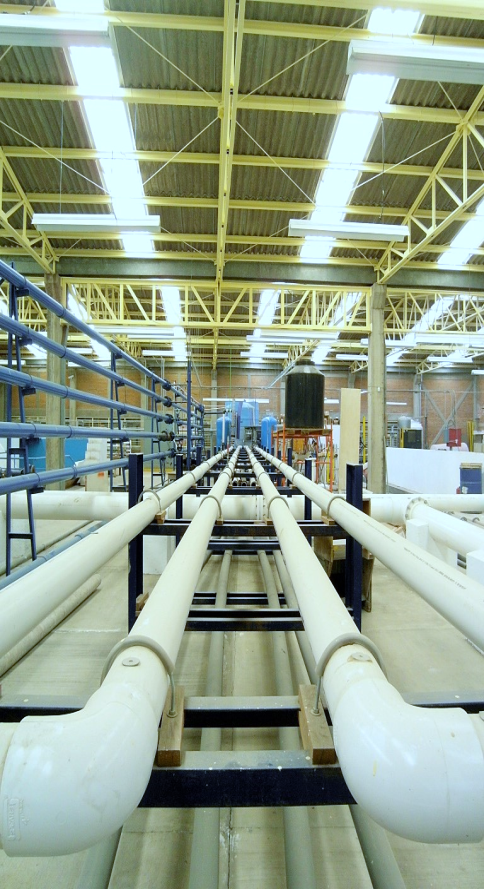ENERXICO partners at the Universidad Autónoma Metropolitana-Azcapotzalco (UAM-A) in Mexico City is collaborating with other institutions within the project in order to develop a computer code called Black Hole (or BH code) for the numerical simulation of oil reservoirs, based on the numerical technique known as Smoothed Particle Hydrodynamics (SPH). This new code is an extension of the DualSPHysics code and is the first SPH-based code that has been developed for the numerical simulation of oil reservoirs.
The SPH numerical simulations will be compared to the results obtained from commercial codes, from multiphase laboratory experiments (see Figure 1) and field data from some commercial partners. UAM-A collaborates in all these activities, including experiments at the IINGEN-UNAM.
Dr. Leonardo Sigalotti, who leads the UAM-A team, shares an update about the state of their work and how COVID-19 has affected them.
On working from home and accepting the ‘new normal’
“At UAM-A we have a number of research members, post-docs and several graduate and undergraduate students. COVID-19 has forced us to work in a different way. We used to meet at the university before, but since March this year we have been unable to go to the office and we have been forced to work at home. An important difference is that we now have frequent videoconferences for discussing the advances of the work. In a sense we have become more productive than before because now we do not have social activities outside our home and many of us are dedicating more time to work. On the other hand, we are now teaching through videoconferences and the interaction with students have become more complicated and it is also taking more of our time.”
On computers doing numerical simulations for the BH code
“The computers have continued working and this has not affected the development of the work.”
On delays in UAM-A and IINGEN-UNAM´s experimental work
“We are involved in the experiments at IINGEN-UNAM and in fact also at other laboratories in México. As mentioned before, the aim of these experiments is to compare results of multiphase experiments to SPH simulations for validating the code. The experiments were designed and we were almost ready to start the experiments when they had to be stopped in March. We expect that we will be able to continue the experiments in September, which means a five-month delay. This was the part of the project that has been most affected. On the other hand, theoretical work has been affected to a lesser extent due to the difficulty of being able to interact directly in person. Videoconferences require a schedule to carry them out, and unlike personal interactions, people can get tired much sooner. We hope to return to normal activities within the next few months and be able to continue with the experimental work.”

More about the BH code:
The BH code is a large-scale massively parallel reservoir simulator capable of performing simulations with billions of “particles” or fluid elements that represents the system under study. It contains improved multi-physics modules that automatically combine the effects of interrelated physical and chemical phenomena to accurately simulate in-situ recovery processes. This includes the development of a graphical user interface multiple-platform application for code execution and visualization, and for carrying out simulations with data provided by industrial partners and performing comparisons with available commercial packages. Furthermore, a large effort is being made to simplify the process of setting up the input for reservoir simulations from exploration data by means of a workflow fully integrated in our industrial partners’ software environment.
